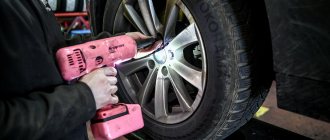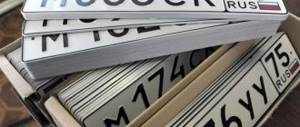For safety reasons, Russian motorists need to change the tires on their car twice a year, putting on winter tires before the immediate arrival of winter, and summer tires immediately after the ice and snow melt. After all, untimely replacement of tires can affect the car’s handling and the safety of passengers.
Many also believe that there are replacement deadlines regulated by law and penalties for non-compliance. In fact, there is a regulatory provision on deadlines, but the current administrative legislation in 2021 does not in any way punish drivers who did not take care of “re-shoeing” the car in time.
Normative base
Legal regulation in the field of installation and use of tires on vehicles in the summer is carried out by the following legislative acts:
- Technical regulations TR CU 018/2011 – regarding the timing of replacement of winter tires.
- Appendix 1 to Government Decree No. 1008 of December 5, 2011 - on what criteria tires must meet in order for the car owner to successfully pass inspection.
- Section 5 of the “List of faults and conditions under which the operation of the vehicle is prohibited”, contained in Government Decree No. 1090 of October 23, 1993, states that if the tires do not meet which parameters, the operation of the vehicle is prohibited.
- Chapter 12 of the Code of Administrative Offenses – on liability for non-compliance with the legislation on the use of tires.
When is it legal to change winter tires to summer tires?
The traffic rules do not have clear instructions on the time of year and season for using specific tires. Drivers of cars and trucks are guided by the standards set out in the following documents.
- Technical Regulations of the Customs Union TR CU 018/2011.
- Appendix No. 1 to PP No. 1008 dated December 5, 2011.
- PP No. 1090 dated October 23, 1993 (Section 5 “List of faults and conditions under which the operation of vehicles is prohibited”).
- Chapter 12 of the Code of Administrative Offenses of the Russian Federation.
The time for replacing summer tires with winter ones and preparing wheels for the cold season is indicated in the Technical Regulations TR CU 018/2011. It is valid on the territory of all member countries of the Customs Union, but in some regions the authorities may shift the specified deadlines, based on the climatic characteristics of the region or region. According to TR CU 018/2011, winter tires are legally required to be changed no later than May. From June to August, all cars must be “re-shod” with summer tires. It is worth changing to winter tires no later than November. From December to February you can use tires marked M+S. It is important to note that this rule is only relevant for tires with studs. This means that, by law, friction tires can be installed on wheels at any time of the year and used even in summer. However, for safety reasons, using Velcro in hot weather is still not recommended.
So, you can summarize the legal requirements regarding when you need to change tires for seasonal tires using this table.
| Tire type | Availability of M+S marking | Period of use |
| Summer | No | From March to November |
| Winter studded | Yes | From September to May |
| Winter without thorns | Yes | No limits |
In addition to the timing of tire replacement, it is worth considering a number of legal requirements regarding tires on vehicles. Technical regulations state that identical tires must be installed on all wheels of the car. In addition, it is important that the selected type of tire matches the load index and speed of the vehicle. An exception can be made only for the temporary installation of a spare wheel, but its service life is not clearly stated. If the above rules are not followed, the driver of the vehicle faces a warning or a fine.
When is it legally necessary to install summer tires?
In 2021, based on clause 5.5. Appendix 8 to the Technical Regulations TR CU 018/2011, you cannot drive a car with studded tires in the summer months:
- June;
- July;
- August.
It turns out that if a car owner drives on studded tires in winter, then they must be replaced (by law) before June 1, 2020. If this is not done, the law will be considered violated.
In ab. 2 clause 5.5. Appendix 8 to the Technical Regulations TR CU 018/2011 states that you cannot drive a vehicle that does not have winter tires in:
- December;
- January;
- and February.
As you can see, it is prohibited to replace studded tires with summer tires before March 1 - this would be a violation of the law.
Accordingly, you need to change winter tires with studs to summer ones on any day of spring, that is, from March 1 to May 31. Other types of winter tires (without studs) do not need to be changed by the summer, and it is completely legal to drive.
Other important questions:
When is it legal to change tires?
The technical regulations of the Customs Union (TR CU) “On the safety of wheeled vehicles” prohibit the use of studded tires in the summer (from June to August inclusive). Thus, the driver has 3 months to change tires (March-April-May).
Formally, “Velcro” cars do not fall under this clause of the law, but we strongly recommend not to ride them in the heat. How to act in the off-season? According to actual weather, taking into account the long-term forecast.
What about all-season tires?
Universal tires, also called “all-season” tires, are designed for use in the Central European climate. Despite the fact that they do not need to be changed, the cost of such kits is higher, and they wear out faster.
What about bans and fines?
The CU TR states that only the use of studded tires is prohibited in the summer months (June, July, August). Also, the tread depth must be at least 1.6 mm for summer tires and 4 mm for winter tires.
According to Article 12.5 of the Code of Administrative Offenses, traffic police officers have the right to issue a fine to the driver, if these rules are not followed - 500 rubles.
Requirements for summer tires in 2021
Requirements for summer tires in 2021 are presented in Section 5 of Appendix 8 to the Technical Regulations TR CU 018/2011:
- The vehicle must have tires recommended by the manufacturer;
- The tire size must match the wheel rim;
- according to the speed category and load-bearing capacity index, the rubber must correspond to the maximum speed of the vehicle according to the technical documentation and the permissible weight per tire (for example, the 82H marking will mean that the tire can be installed on a car with a maximum speed of up to 210 km/h and in the case if it does not bear a load of more than 475 kg);
- The tread height of summer tires must be more than 1.6 mm (for cars, trucks weighing up to 3500 kg and trailers up to 3500 kg), 2 mm for buses, 0.8 mm for motor vehicles, 1 mm for all others (trucks and trailers over 3500 kg);
- damage to tires is not allowed (various punctures, through and non-through cuts), exposing the cord, delamination of the carcass, sidewall, or sealing layer.
Requirements for seasonal tire replacement
When the winter season arrives, any car owner should put his “iron horse” on the right rubber tires. At the same time, many people have a question related to the period of “changing shoes” based on real weather conditions. The answer to it is set out in the Technical Regulations of the Customs Union (hereinafter referred to as the Technical Regulations), which have been in force in our country since 2015.
Decision of the Customs Union Commission dated 12/09/2011 N 877 (as amended on 12/25/2018) “On the adoption of the technical regulations of the Customs Union “On the safety of wheeled vehicles” (together with “TR CU 018/2011. Technical regulations of the Customs Union. On the safety of wheeled vehicles” Vehicle")
Practical understanding of the issue
For a practical understanding of the rules under consideration, it should be borne in mind that winter non-studded tires with Velcro can be used all year round. If you use summer tires in the warm months of the year, they must be replaced between September and November, and the reverse steps should be carried out with the onset of spring, namely from March to May. Different territories of Russia (based on climatic conditions) have their own periods for replacing winter tires with summer tires, for example:
- In Moscow, it is recommended to change winter tires from 15.10. until 25.10, and summer from 10.04. to 16.04.
- In the Novosibirsk region, winter from 12.10. to 17.10, and summer from 24.04 to 30.04.
- In the Perm region, winter from 12.10. to 17.10, and summer from 17.04 to 23.04.
- In the Irkutsk region, winter from 10.10. to 16.10, and summer, respectively, from 25.04 to 30.04.
What to consider when changing winter tires to summer tires
Important! The above deadlines seem to be somewhat arbitrary, and therefore it is more advisable to “change shoes” of the car a little earlier than the designated dates. This action will allow you to avoid the queue for tire fitting, and will also prevent you from suddenly getting onto an icy road on summer wheels.
Legal transition to winter tires
This year, you need to take into account the following operating conditions for seasonal tires:
- studded tires should be removed from the car before June;
- Summer tires are prohibited from being installed on a car before February.
Thus, the law allows replacing winter wheels with summer ones from March to May inclusive.
Read also: What should be in the consumer’s corner?
Exact timing for replacing studded wheels
If you strictly adhere to the deadlines established by the Technical Regulations, using different types of tires is allowed in the following order.
| Type of wheels and their markings | Service life |
| Summer wheels without M&S markings | From March to November inclusive |
| Winter studded tires with M&S markings | From September to May inclusive |
| Winter studless wheels with Velcro and M&S markings | Throughout the year from January to December |
Features of all-season operation
There is also a group of certain drivers who prefer all-season wheels with Velcro (designed for use throughout the year). This tire can be used in winter from December to February only if it has the following markings:
- "M+S";
- M&S;
- "MS".
Tread of all-season and winter tires
If the wheels do not have the above symbols, the use of all-season tires during the winter months is prohibited!
Requirements for installing last year's wheels
The possibility of using rubber that has actually been in use for more than one year directly depends on its wear, as well as the presence of serious damage to it. Rubber wear is determined by the remaining tread depth and should be:
- for transport category L - no more than 0.8 mm;
- for cars of categories N2, N3, O3, O4 - no more than 1 mm;
- for cars of categories M1, N1, O1, O2 - no more than 1.6 mm;
- for cars of category M2, M3 - no more than 2 mm.
Regarding external damage to the rubber, it should be noted that it should not have punctures, cuts, “hernias” and tears, as well as peeling of the tread from the side of the wheel.
Important! Failure to comply with any of the above conditions is a violation of the law.
In addition, there is a rather important nuance in the operation of machine tires, which every vehicle driver should know about. The rubber installed at the front and rear wears unevenly and differently. On the driving axle of the car, wear is more significant. In connection with the above, “used” tires should be installed so that the drive axle has less worn tires.
In practice, car owners use two methods to correctly alternate tires on axles:
- When replacing tires, you should leave the marks LP (left-front), PP (right-front), LZ (left-rear), RZ (right-rear) on the tires with a marker or chalk. In addition, you can insert appropriate notes with these notes into the tires themselves.
- The depth and extent of wear is assessed by performing a thorough visual inspection of the tires before installation. The option under consideration is the most painstaking and complex and can cause difficulties with slight wear of the rubber.
Requirements for purchasing and installing new tires
First of all, before purchasing tires, you need to study the vehicle’s operating instructions, which contain a section covering the permissible characteristics for tires.
How to choose winter tires
Secondly, it should be borne in mind that the tires (all four tires) installed on the axles of the car must be the same. The law does not prohibit the use of tires on the front axle that differ from those on the rear axle on one car, but it is more advisable to install wheels of the same size, markings and tread pattern on the car. The secret is that different modifications of tires generally contain different compositions, which sometimes has a negative effect on their coefficient of adhesion to the road surface. In this regard, the car may behave unpredictably when braking.
Advice! Ideally, you should purchase tires that are completely identical to each other in all respects (type, size, marking). It is necessary to take into account that tires of the same model, produced at different enterprises and in different years, may have a different percentage of wear, which is directly related to the handling of the car.
Driving on all-season tires in the summer season
“All-season” is tires that are designed for use at any time of the year - both winter and summer.
These types of tires are not equipped with anti-skid studs, which means that they can be legally driven in the summer (after all, in the summer months it is prohibited to drive only a vehicle with studded tires).
However, during the hot season in Russia, it is still not recommended to use all-season tires, since they are intended for countries with a mild climate - where there are no significant differences in air temperature between seasons. It’s better to go to a tire shop and install standard summer tires.
Riding on Velcro during the summer months of the year
Among motorists, “Velcro” (friction tires) are winter tires that are not equipped with studs.
In accordance with Technical Regulations TR CU 018/2011, you can drive on such tires all year round. After all, tires with studs are prohibited in summer, but Velcro does not have them. Just as you can drive in winter, because it is winter and has the appropriate markings (MS, M & S, M + S).
However, like all-season tires, Velcro tires are highly not recommended for use in the hot season, primarily due to the “softness” of the rubber compound used in their manufacture. Otherwise, the following consequences are possible:
- loss of controllability;
- increase in braking distance;
- acceleration of tire wear;
- increased fuel consumption.
Penalties for “wrong” winter tires
This year, the current administrative legislation does not contain references to the Technical Regulations.
In other words, it is impossible to fine a driver for not having winter tires on his car. However, it is possible that in the near future such a legal norm and, accordingly, a penalty will be introduced. Read also: Commodity examination
The law provides for liability for the operation of worn-out winter tires, in the form of imposing a fine of 500 rubles on the violator or warning him (which is also considered administrative liability). A similar fine is imposed on a driver whose car is on tires marked M+S, etc. In this case, the tire tread depth in the most “killed” place must be less than 4 mm and the car is operated on an icy or snowy road (route).
Driving in summer on tires equipped with studs
In clause 5.5. Appendix 8 to the Technical Regulations TR CU 018/2011 clearly states that you cannot drive a car in the summer (June, July, August) that has tires with anti-skid spikes installed.
It turns out that such tires can be used 9 months a year - all autumn, winter and spring. The deadline for motorists to remove winter studded wheels from their cars in 2020 is May 31.
However, you should not wait for the specified date. It is recommended to change tires with studs to summer tires, all-season tires or Velcro tires when the average daily temperature for several days is from plus 5 to 7 degrees Celsius and only after the icy and snow-covered surfaces have completely disappeared from the roads.
Replacing winter tires with summer tires for trucks
More recently, owners of trucks were required to change tires at the same time as owners of cars, motorcycles, buses, etc.
That is, when driving in winter on studded tires, you had to change them to summer tires before May 31 (or earlier). And if there was Velcro, you could ride it all year round without changing it at all.
But on November 11, 2018, amendments to the Technical Regulations TR CU 018/2011 came into force, which allowed owners of all categories of cars, except M1 and N1, to drive in winter on any tires at all:
- all-season;
- “Velcro”;
- summer;
- winter
It turns out that owners of trucks of categories N2 (from 3,500 to 12,000 kg) and N3 (over 12,000 kg) can simply buy summer tires and drive on them all year round without “changing shoes.” But for those who have a car of class N1 (trucks up to 3500 kg), for the winter they still need to install tires designed specifically for use on snowy or icy surfaces.
As for the summer, the ban remained unchanged for everyone - that is, if the truck owner has tires with studs, they must be removed before May 31 - driving in the summer on such tires is prohibited. It will be possible to put on studded tires again on September 1st. No. 1, No. 2 and No. all other types of tires in June, July and August without any restrictions .
When to change shoes for the summer according to timing
Russian legislation does not have a clear time frame regulating when to change winter tires to summer ones. When studying this issue, drivers are recommended to review the information in the technical regulations of the Customs Union.
The document was issued six years ago. It states that the use of summer tires in the winter (December, January and February) is prohibited.
On the question of when to change tires to summer ones, it is stated that using tires with studs in the summer months is prohibited.
Therefore, there is a ban on driving on summer tires in June, July and August.
What should the temperature be?
The Russian climate is a separate topic that requires discussion on the issue of tire replacement. Weather surprises in our country force drivers to independently determine when to put summer tires on their cars.
Experts in the rubber industry recommend analyzing the air temperature outside.
Representatives of the Tire Manufacturers Association believe that when the temperature rises to seven degrees above zero, it is possible to change winter tires to summer ones. Such temperature conditions allow maintaining the quality of tires and its characteristics. We are talking about grip on the road surface and the elasticity of the tire. At lower temperatures it simply hardens and breaks down over time.
Existing fines for improper use of car tires in 2020
In 2020, Chapter 12 of the Code of Administrative Offenses, which regulates the liability of motorists for violating traffic rules, does not contain any indication of sanctions for non-compliance with the requirements of the Technical Regulations TR CU 018/2011.
And since only it contains a mention of the timing of tire replacement, fines for late replacement of winter tires with summer tires in 2021 cannot currently be imposed.
And yet, traffic police officers have the opportunity to punish the driver with a monetary penalty. But only for non-compliance of tires with the requirements specified in Section 5 of the “List of Malfunctions and Conditions” to the Traffic Regulations. In this case, sanctions will apply under Part 1 of Art. 12.5. Administrative Code:
- warning;
- or a fine of 500 rubles.
For example, the above liability should be expected if the tire:
- has a tread height below the established values;
- has punctures, cuts, and delaminations of the frame;
- does not correspond to the speed index and weight of the vehicle model.
In addition, a warning or 500 rubles will be issued if different tires are installed on one axle of the vehicle (front or rear) on the left and right. For example, the front left has summer tires, and the front right has winter tires. Or one tire is new and the other is retreaded.
The traffic police will also fine you for installing both studded and non-studded tires on a vehicle at the same time (regardless of the axle). For example, 3 wheels have tires without studs, and the remaining one has them.
So it turns out that if you drive in the summer on the same studded tires, then there is no penalty. And if, for example, you put tires with studs, but of different sizes, on one axle in the hot season, then the driver will face sanctions under Part 1 of Art. 12.5. Code of Administrative Offences.
If the spare tire is different from those already installed on the vehicle
Each car has a spare tire, which will be needed in case one of the tires has been punctured and you need to get to the nearest tire shop without resorting to a tow truck.
In clause 5.7.4. Technical regulations TR CU 018/2011 say that different tires (winter and non-winter, for example) cannot be installed on the same axle. However, the requirements of this paragraph do not apply in the case of temporary installation of a spare wheel on the vehicle.
In this case, it is important whether the “spare tire” is on winter tires or summer tires (since the note to clause 5.7.4. applies only to this clause). That is, “seasonality” must correspond. For example, you cannot install a spare tire in the summer if it (theoretically) has anti-skid studs (but there will be no fine for this).
In clause 5.5. “The list of faults and conditions”, which contains a similar rule about the inadmissibility of installing different tires on one axle, there is no such note about the “spare wheel” as in the Technical Regulations TR CU 018/2011. Therefore, it remains unclear whether or not the driver will be able to be charged under Part 1 of Art. 12.5. Code of Administrative Offenses specifically for the temporary use of a spare wheel that is different in size or other characteristics from those already installed on the vehicle (for the out-of-season “spare wheel,” as we have already indicated, there are no fines).
Is it possible to store summer tires on rims?
In Russia, in the southern regions, the use of winter tires may be prohibited from March to November. But residents of the north need to drive on winter tires from September to May. At the same time, the government at the regional level has the right to limit these terms.
If a person drives on studded tires in winter, it is worth replacing the wheels with summer ones from March to May. And before winter you need to have time to change your shoes from September to November. In addition, there is now a lot of debate about whether it is better to have complete wheels.
In this case, if seasonal tires are constantly on the rims, deformation of the bead area and sidewall cord is likely. From a theoretical point of view, it is much cheaper and easier to keep the wheels assembled - just like a tire is constantly on the rim.
On the practical side, it has been proven that nothing bad happens to tires if they are on a rim, but for this, tire service workers must have normal experience.
Nuances
Some features:
- if you come for a technical inspection on winter studded tires in the summer, then nothing will happen (since Appendix 1 to Resolution No. 1008 does not indicate that tires are checked for their compliance with the season);
- It is unclear for how long it is allowed to put a “spare” on (it seems that only for the purpose of traveling to a place of permanent parking and/or repair);
- There was still a draft law on fines for using out-of-season tires (No. 464241-6), but it was never adopted (according to it, it was proposed to add a new part 3.2 to Article 12.5, according to which motorists would be fined 2000 rubles for violating the rules for using wheels and tires).
https://prav-voditel.ru/pravila-ekspluatatsii-avtomobilya/kogda-menyat-zimnyuyu-rezinu-na-letnyuyu
Tread depth standards
If you look at the technical regulations “On the safety of wheeled vehicles”, it clearly states that studded tires are prohibited for use from the very beginning of summer until its end. If a vehicle is equipped with summer tires, they must be replaced before December 1, because from the beginning of winter until the end of February, driving on summer tires is prohibited, so as not to provoke car accidents.
Each region sets its own specific standards, which vary depending on weather conditions. If a vehicle is stopped, traffic police inspectors can pay attention to the depth of the tread pattern, and in case of discrepancy, they have the right to issue the vehicle owner a fine provided for by law. For a passenger car, tread wear should not be more than 1.6 mm; if the vehicle is a motorcycle, tread wear should be no more than 80 mm. Vehicles that carry a large number of people must have a tire pattern depth of at least 2 mm. If a freight vehicle weighs 3.5 tons or more, its tread pattern should be 1 mm deep.











